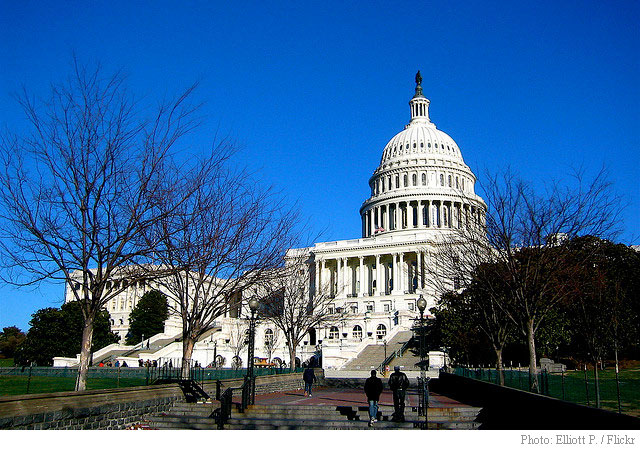Congress is heading into another big brawl over the federal budget deficit, the national debt, and the debt ceiling.
Republicans are already talking about holding Social Security and Medicare “hostage” during negotiations—hell-bent on getting cuts in exchange for a debt limit hike.
Days ago, U.S. Treasury Secretary Jacob Lew asked whether our nation would “muster the political will to avoid the self-inflicted wounds that come from a political stalemate.”
It’s a fair question. And there’s only one economically sound answer: Congress must raise the debt ceiling, end the sequester, put more people to work, and increase our investment in education and infrastructure.
Here are the three reasons why Republican deficit hawks are wrong. (Please watch and share our attached video.)
FIRST: Deficit and debt numbers are meaningless on their own. They have to be viewed as a percent of the national economy.
That ratio is critical. As long as the yearly deficit continues to drop as a percent of the national economy, as it’s been doing for several years now, we can more easily pay what we owe.
SECOND: America needs to run larger deficits when lots of people are unemployed or underemployed – as they still are today, when millions remain too discouraged to look for jobs and millions more are in part-time jobs and need full-time work.
As we’ve known for years – in every economic downturn and in every struggling recovery – more government spending helps create jobs – teachers, fire fighters, police officers, social workers, people to rebuild roads and bridges and parks. And the people in these jobs create far more jobs when they spend their paychecks.
This kind of spending thereby grows the economy – thereby increasing tax revenues and allowing the deficit to shrink in proportion.
Doing the opposite – cutting back spending when a lot of people are still out of work – as Congress has done with the sequester, as much of Europe has done – causes economies to slow or even shrink, which makes the deficit larger in proportion.
This is why austerity economics is a recipe for disaster, as it’s been in Greece. Creditors and institutions worried about Greece’s debt forced it to cut spending, the spending cuts led to a huge economic recession, which reduced tax revenues, and made the debt crisis there worse.
THIRD AND FINALLY: Deficit spending on investments like education and infrastructure is different than other forms of spending, because this spending builds productivity and future economic growth.
It’s like a family borrowing money to send a kid to college or start a business. If the likely return on the investment exceeds the borrowing costs, it should be done.
Keep these three principles in mind and you won’t be fooled by scare tactics of the deficit hawks.
And you’ll understand why we have to raise the debt ceiling, end the sequester, put more people to work, and increase rather than decrease spending on vital public investments like education and infrastructure.
- Bulenox: Get 45% to 91% OFF ... Use Discount Code: UNO
- Risk Our Money Not Yours | Get 50% to 90% OFF ... Use Discount Code: MMBVBKSM
Disclaimer: This page contains affiliate links. If you choose to make a purchase after clicking a link, we may receive a commission at no additional cost to you. Thank you for your support!



Leave a Reply